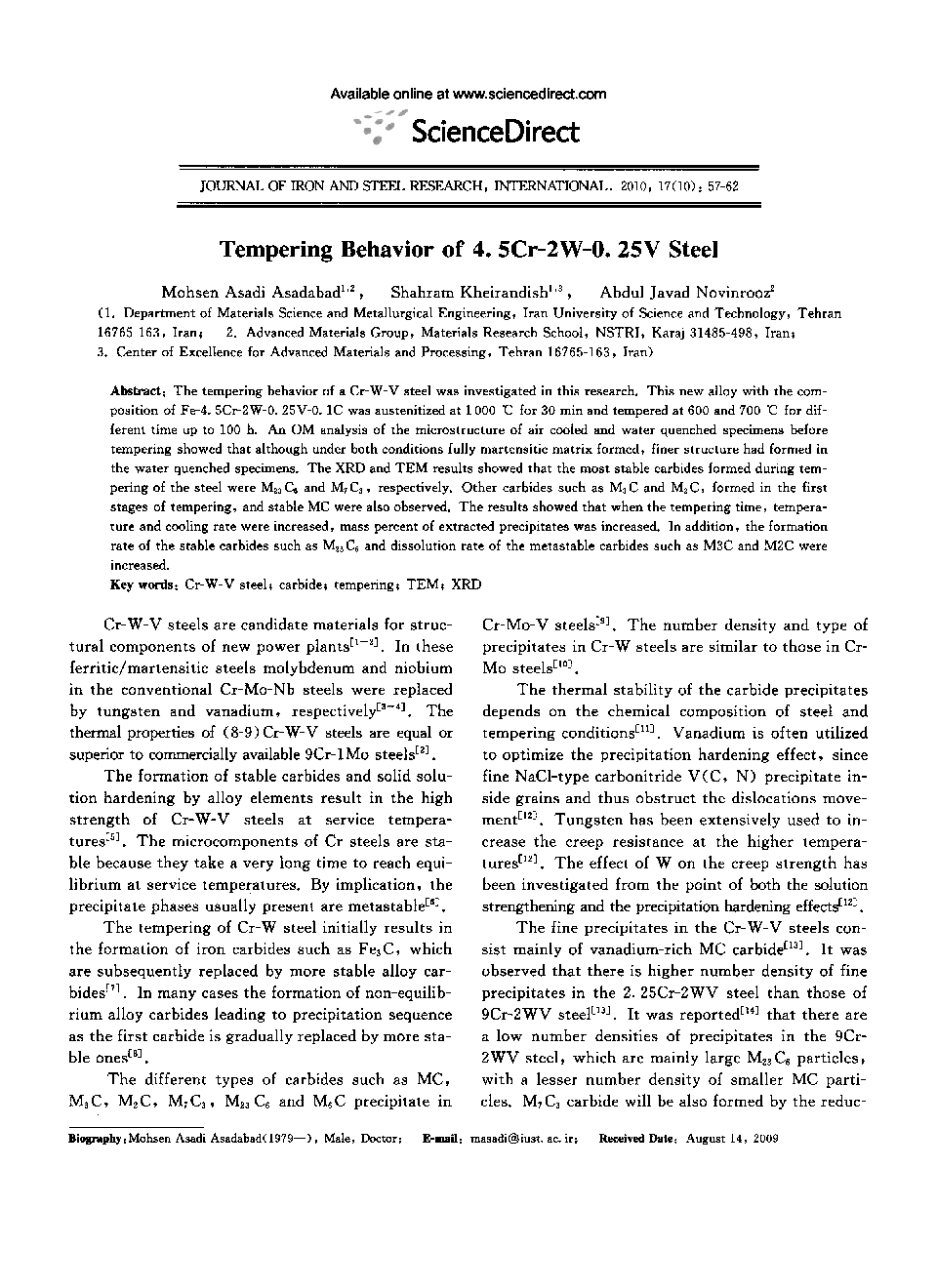| Article ID | Journal | Published Year | Pages | File Type |
|---|---|---|---|---|
| 1629821 | Journal of Iron and Steel Research, International | 2010 | 6 Pages |
The tempering behavior of a Cr-W-V steel was investigated in this research. This new alloy with the composition of Fe-4.5Cr-2W-0.25 V-0.1C was austenitized at 1000 °C for 30 min and tempered at 600 and 700 °C for different time up to 100 h. An OM analysis of the microstructure of air cooled and water quenched specimens before tempering showed that although under both conditions fully martensitic matrix formed, finer structure had formed in the water quenched specimens. The XRD and TEM results showed that the most stable carbides formed during tempering of the steel were M23 C6 and M7C3, respectively. Other carbides such as M3C and M2C, formed in the first stages of tempering, and stable MC were also observed. The results showed that when the tempering time, temperature and cooling rate were increased, mass percent of extracted precipitates was increased. In addition, the formation rate of the stable carbides such as M23C6 and dissolution rate of the metastable carbides such as M3C and M2C were increased.
